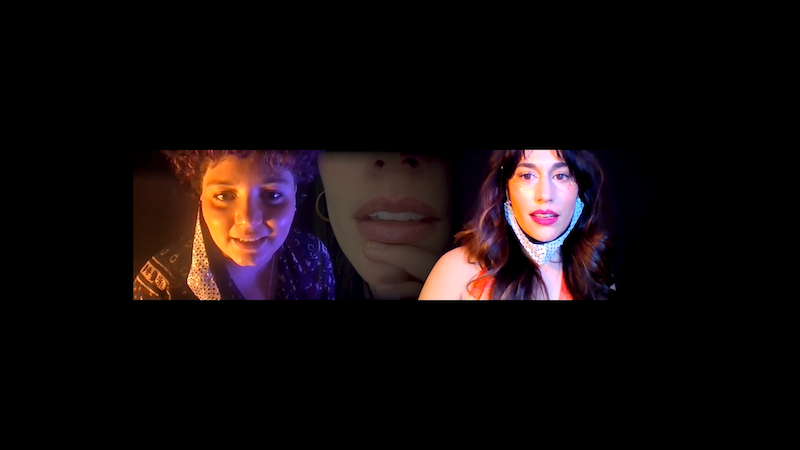When Social Media, Spanglish, and Shakespeare Meet, Romeo y Julieta is the Result
Review of Romeo y Julieta, presented by Seattle Shakespeare
Written by Teen Writer Katherine Kang and edited by Teen Editor Lily Williamson

Romeo and Juliet is a classic play that almost every student is familiar with. But what if the script was modernized to include trends that Gen Z-ers are familiar with, such as Instagram, TikTok, and even masks?
Seattle Shakespeare did just that with its production of Romeo y Julieta, a multilingual adaptation of the famous and bitter love story of Romeo and Juliet. With a gender-bent and diverse cast, the production was a perfect way to begin Pride Month. From the allusions to queer culture to a Spanish, English, and Spanglish script, this show was a celebration full of love, drama, and emotion.
The Zoom format of this play did not limit the production quality. Director Sophie Franco did a phenomenal job using technology to their advantage through special effects and transitions. Although the online format was optimized, one detail that detracted from this platform’s experience was that some actors’ camera angles were too far away or cutting off the top of their heads. There was also no clear set, as most people had a plain black background, but the location changes were differentiated by costuming, screen changes, or text on the screen. On-screen comments also added to the show, as they were used to introduce the characters. This helped to make it clear who played which characters and provided some context on what they were like. Oftentimes these two lines that explained their “vibe” were a humorous addition to their direct background story.

One aspect of the show that particularly stuck out to me was the modern references. It was almost bittersweet to see the actors wear masks at times, but it did remind me that it is part of our current reality. Additionally, the use of technology in the performance built onto the contemporary spin. @papir0meo_, Romeo’s (Meme Garcia) dramatic TikTok, was one that I could not forget. The use of filters and captions were not the most on-trend but conveyed the message. Similarly, Romeo scrolled on Instagram, cyberstalking @rosaline_deverona to see Rosaline’s (Klarissa Marie Robles) posts. Overall, I think that adding these trendy and present-day references adds to the classics and engages a new audience that may not typically be interested in classic theater.
The experience of hearing the classic old-English terms like “hath” and “thy” mixed in the same sentences with present-day slang is one that is unique and unexpected from a Shakespeare play, but it did not take away from the classic story. The Shakespearean English reminds us of the story’s origin and historical significance, but the contemporary slang keeps the show current and draws in the Gen Z audience.
Not only was Spanish blended with present-day and Shakespearean English, but the costumes also combined 16th century and 21st-century fashion. With the two seamlessly connected, the show brings the audience (that is separated in their own homes) together, to the time of Romeo and Juliet while bringing a sparkle of our culture with us.

Along with the targeted Gen Z audience, this show also draws in the Spanish-speaking audience as well. The bilingualism of Spanish and English intrigues the audience and solicits listening skills beyond familiarity or English. If they are not familiar with the traditional story or the Spanish language, the viewer may get lost, as this recording did not include subtitles.
Ultimately, this eclectic and unique show proves that the art of storytelling can be done in an engaging and exciting way. It also demonstrates a clear example of putting a spin on a classic English story to engage a new audience. With more shows like this emerging in the future, more young people can be drawn into the theater and entertained by the beautiful art of the show.
Romeo y Julieta presented by Seattle Shakespeare and is available online starting June 6, 2021. For more information see here.
Lead photo credit: Romeo y Julieta. Courtesy of Seattle Shakespeare.
The TeenTix Newsroom is a group of teen writers led by the Teen Editorial Staff. For each review, Newsroom writers work individually with a teen editor to polish their writing for publication. The Teen Editorial Staff is made up of 6 teens who curate the review portion of the TeenTix blog. More information about the Teen Editorial Staff can be found HERE.
The TeenTix Press Corps promotes critical thinking, communication, and information literacy through criticism and journalism practice for teens. For more information about the Press Corps program see HERE.

